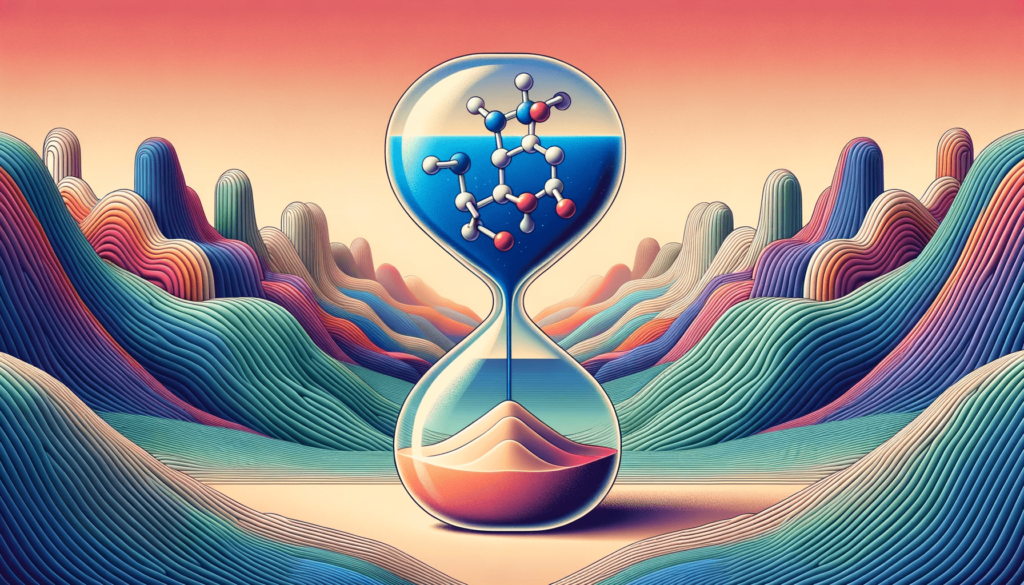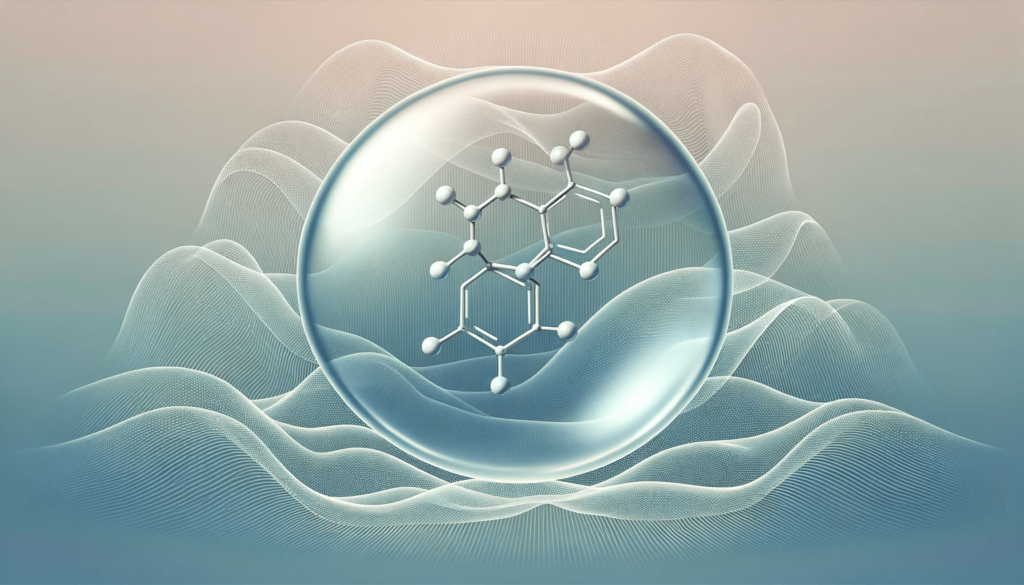Ketamine is often referred to colloquially as “K” or “Special K”. It was originally synthesized in 1962, and is a dissociative anesthetic with a history of usage in a variety of medical settings, including pediatrics, geriatrics, obstetrics, and pain management. Due to its psychedelic side effects post-administration, its usage in some medical situations is limited. Despite these effects, it is prominently employed in many countries, especially in emergency situations or in regions with resource constraints.
Medical Uses of Ketamine

Anesthesia: Ketamine was initially approved for use as a surgical anesthetic. It induces a trance-like state while providing pain relief, sedation, and memory loss. Unlike other anesthetics, it generally does not suppress breathing, making it valuable in specific scenarios.
Pain Management: Ketamine might be used in lower doses to help manage chronic pain, especially when other treatments have failed.
Depression: Recent studies have suggested that ketamine has rapid-acting antidepressant properties. Some clinics even administer it intravenously for treatment-resistant depression, though it’s crucial to note this is still an emerging treatment.
Treatment of PTSD: There’s emerging evidence suggesting that ketamine could be valuable in treating PTSD and other trauma-related disorders.
Recreational Use of Ketamine
When used recreationally, ketamine can induce hallucinations and a feeling of ‘floating’. It’s popular in club and party scenes and is sometimes misused because of its dissociative effects.
At high doses, users may experience what’s termed the “K-hole”, a state of extreme dissociation where users feel completely detached from their surroundings.
Risks and Side Effects Associated with Ketamine

Let’s delve deeper into the risks associated with the recreational use of ketamine.
Physical Risks
Bladder Toxicity: One of the most well-documented physical risks associated with regular and heavy ketamine use is its toxic effect on the bladder. This can lead to symptoms such as:
- Painful urination
- Blood in the urine
- Increased frequency and urgency to urinate
- In severe cases, irreversible bladder damage can necessitate removal of the bladder.
Liver Damage: Chronic high-dose use can lead to liver injury and elevated liver enzymes.
Central Nervous System: While ketamine is primarily used medically for its effects on the CNS (like anesthesia), recreational misuse, especially in large amounts, can lead to:
- Dizziness, unpleasant sensations
- Fatigue might linger the following day.
- Seizures.
Gastrointestinal Problems: Nausea and vomiting are common side effects. If someone vomits while unconscious, there’s a risk of choking.
Injury: As an anesthetic, Ketamine, when consumed in large or frequent doses, can lead to significant physical impairments such as loss of balance and compromised reflexes, raising the risk of accidents.
Psychological Risks
Depersonalization/Derealization: These are feelings of being detached from oneself or feeling that the world is unreal or dreamlike. While some users seek this experience, for others, it can be unsettling and lead to lasting episodes outside of ketamine use.
Anxiety and Panic Attacks: The altered state of consciousness can induce severe anxiety or panic attacks in some users.
Memory Impairments: Chronic use can lead to issues with memory and cognitive function.
Mood Fluctuations: Some users report feelings of depression or mood swings after the effects wear off.
Acute Psychosis: Some users might experience hallucinations, paranoia, and disorganized thoughts. These effects are usually temporary but can be profoundly distressing. The psychedelic experiences with Ketamine differ from that of LSD or mushrooms. Extreme effects might include out-of-body experiences or Near-Death Experiences, which can be either a sought-after effect or a traumatizing one. Prolonged misuse can exacerbate or lead to mental health issues
Exacerbation of Pre-existing Mental Health Conditions: If someone has an underlying mental health condition, like bipolar disorder or schizophrenia, ketamine might exacerbate their symptoms.
Dependence and Addiction: While traditionally believed to have a lower potential for addiction than substances like opioids or stimulants, regular recreational users can develop a psychological dependence on ketamine. Though a distinct withdrawal syndrome hasn’t been documented, patterns of compulsive consumption have been observed.
Harm Reduction Strategies for Ketamine

Given these risks, harm reduction is crucial. Some strategies include:
Educate: Inform yourself and potential users about the effects, both positive and negative. Knowledge is a powerful tool against misuse.
Test the Substance: Due to the prevalence of adulterated drugs on the black market, using drug testing kits can prevent unintended ingestion of harmful substances.
Safe Environment: Due to the dissociative effects of ketamine, it’s crucial to be in a familiar and safe setting, free from hazards. It’s recommended to have a sober sitter – someone who remains sober to monitor the user and ensure their safety.
Set and Setting: A safe environment and positive mental state can reduce the risk of adverse experiences. If combining substances, the context becomes even more critical.
Start Low, Go Slow: It’s essential to be cautious with doses and be familiar with the substance’s effects.
Limit Frequency: Encourage infrequent use to mitigate potential bladder issues and dependence.
Seek Medical Advice: If someone is considering using ketamine for mental health reasons, they should first consult with a healthcare professional.
It’s important to remember that while harm reduction strategies can mitigate some risks, they can’t eliminate them entirely. The best way to avoid harm is not to use. However, respecting individuals’ autonomy means providing them with comprehensive information to make informed decisions.
Ketamine Dosage and Timing

It’s essential to be informed about what constitutes a typical dose versus a potentially dangerous one. Overdosing can lead to severe complications, including respiratory depression, unconsciousness, and, in extreme cases, death. Dosages might vary depending on the method of administration (e.g., intranasal vs. oral).
| Oral | Insufflated | Intramuscular | |
| ⚪ Light | 50-75 mg | 15-30 mg | 15-25 mg |
| 🟡 Medium | 75-300 mg | 30-75 mg | 25-50 mg |
| 🔴 Severe | 300+ mg | 75+ mg | 50+ mg |
Typically, the main effects last between 1-2 hours. However, it strongly depends on the route of administration, metabolism, and other factors. Very very averagely we can decompose the effects of ketamine over time like this:
- Onset: 10 to 30 minutes
- Transition: 5 to 20 minutes
- Peak Experience: 45 to 90 minutes
- Gradual Decrease: 3 to 6 hours
- Residual Effects: 4 to 8 hours
Ketamine Interactions with Drugs

Interactions between substances can result in unpredictable and sometimes hazardous effects. When it comes to ketamine, the substance can interact with various other recreational drugs, potentially amplifying or modifying the effects and risks.
Ketamine and Alcohol/GHB/Opioids:
- Combined Effects: Both ketamine and these substances are central nervous system depressants. When combined, there can be a potentiation of depressive effects.
- Risks: Increased sedation, respiratory depression, impaired motor function, increased risk of unconsciousness, and even fatal overdose.
Ketamine and Stimulants (e.g., Cocaine, Amphetamines, MDMA):
- Combined Effects: Stimulants can counteract some sedative effects of ketamine but can also increase heart rate and blood pressure. This mix may lead users to take higher doses of either substance than they would otherwise, thinking one counteracts the other.
- Risks: Increased cardiovascular strain, risk of overstimulation or panic, potential for increased addictive behaviors, and heightened risk of accidents due to impaired judgment and coordination.
Ketamine and Psychedelics (e.g., LSD, Mushrooms, DMT):
- Combined Effects: Co-administration can amplify the intensity and unpredictability of the psychedelic experience.
- Risks: Increased risk of “bad trips,” profound disorientation, increased chances of experiencing terrifying hallucinations or thoughts, and potential for psychological distress.
Ketamine and Cannabis:
- Combined Effects: Both substances can have synergistic effects, intensifying the sensory and cognitive alterations of each drug.
- Risks: Increased paranoia, anxiety, or confusion. Enhanced disorientation or dissociative effects.
Ketamine and Dissociatives (e.g., PCP, DXM):
- Combined Effects: Both types of substances can amplify each other’s dissociative effects. It’s a synergistic interaction. This doesn’t just mean they add together; they can multiply each other’s effects, leading to intense and dangerous results.
- Risks: Profound disorientation, potential for dangerous behavior due to altered reality perception, increased risk of accidents or injury.
These are the main points. You can learn more about the compatibility of Ketamine with other substances in the Combination module of our chatbot in Telegram.
Ketamine Chemistry and Storage

On the molecular level, Ketamine shares structural similarities with phencyclidine (PCP). Its primary action as an analgesic and dissociative agent is its antagonistic effect on the NMDA glutamatergic receptors.
Recently, there’s a surge in interest for specific Ketamine formulations, notably the “isomers” like s-ketamine or r-ketamine. Most street Ketamine is racemic, a blend of both. While it’s feasible to separate these, the process is intricate and costly, leading some dealers to charge exorbitantly based on false claims. It’s crucial to be informed and vigilant.
For optimal shelf life and potency, it should be stored away from sunlight and within a temperature range of 4 to 25°C, typically expiring 1-5 years post-manufacture.
Final Thought

Every individual has the autonomy to make choices regarding their body and the substances they introduce to it. However, this autonomy comes with a profound responsibility. The choice to use a substance like ketamine shouldn’t be taken lightly. It’s not just about the immediate experience but also the potential long-term impacts on one’s physical and psychological health. This choice can have ripple effects, influencing relationships, professional aspirations, and overall life trajectory.
Knowledge is the most potent tool we have in ensuring our safety and well-being. Education about substances, their effects, risks, and potential benefits, empowers individuals to make informed decisions. It’s not merely about understanding the pharmacological aspects but also recognizing how a substance might interact with one’s unique physiology, psychology, and circumstances.
Self-awareness is a powerful companion to education. It involves recognizing one’s motivations for using a substance, being honest about one’s patterns of use, and acknowledging when use might be veering into problematic territories. It’s about knowing oneself, one’s limits, and one’s vulnerabilities.
In conclusion, the decision to use any substance, including ketamine, is deeply personal and multifaceted. As individuals, and as a society, we owe it to ourselves to approach such decisions with the utmost care, armed with the best knowledge available, and underpinned by introspection and self-awareness. Only then can we truly honor our autonomy and navigate the complex landscape of substance use in the most responsible and safe manner possible.
Sources
- The Psychedelic Society. Ketamine: Harm Reduction
- DoctorX Files. Ketamine bladder syndrome
- Article Patterns of use, harm reduction strategies, and their relation to risk behavior and harm in recreational ketamine users
- Article Harm related to recreational ketamine use and its relevance for the clinical use of ketamine




